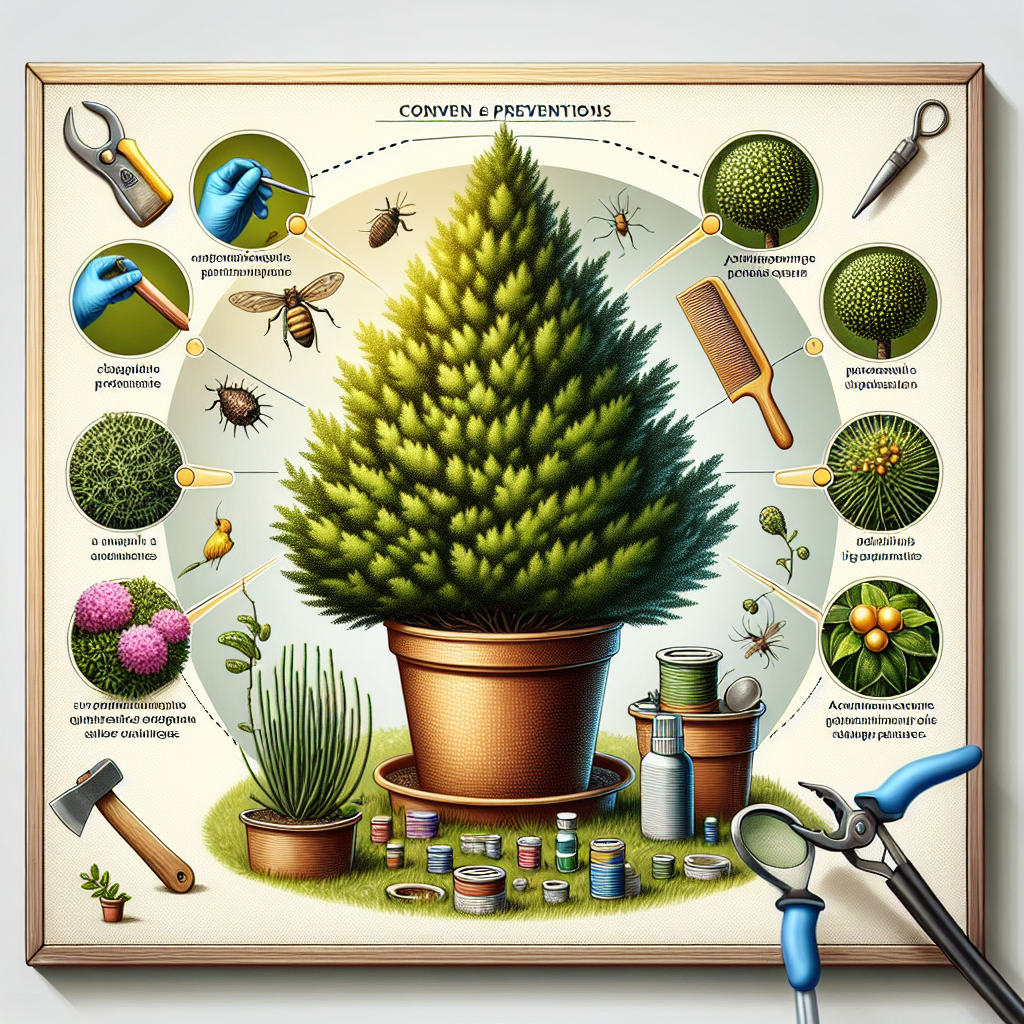Juniper trees are a popular choice for those looking to add a touch of evergreen beauty to their garden or patio. These hardy and versatile plants are well-suited to growing in pots, making them an excellent option for those with limited space or poor soil conditions. However, like all plants, junipers are susceptible to a variety of pests and diseases that can hinder their growth and vitality. In this article, we will discuss some common diseases that can affect juniper trees grown in pots, as well as tips for preventing and treating them.
One of the most common diseases that junipers are susceptible to is root rot. Root rot is a fungal disease that occurs when the roots of a plant become infected with pathogens that cause them to decay. This can result from overwatering, poor drainage, or using contaminated soil or pots. Signs of root rot include yellowing or wilting leaves, stunted growth, and a foul odor coming from the soil.
To prevent root rot in junipers grown in pots, it is essential to ensure that the soil has good drainage and that the pot has adequate drainage holes. Avoid overwatering your juniper tree and always allow the soil to dry out between waterings. It is also a good idea to inspect your juniper’s roots occasionally for signs of decay and replace any infected roots with healthy ones.
Another common disease that can affect junipers is powdery mildew. Powdery mildew is a fungal disease that appears as a white powdery substance on the leaves and stems of plants. It thrives in humid conditions and can be spread through wind or water droplets. In addition to being unsightly, powdery mildew can weaken the plant’s immune system and make it more susceptible to other diseases.
To prevent powdery mildew in junipers grown in pots, it is essential to provide adequate air circulation around the plant by spacing out multiple plants and avoiding overcrowding. Water your juniper tree at the base rather than overhead to prevent water from sitting on the leaves and creating humid conditions favorable for powdery mildew growth.
Spider mites are another common pest that can affect junipers grown in pots. Spider mites are tiny arachnids that feed on plant sap by piercing the leaves with their mouthparts. Infested leaves may appear stippled or speckled with yellow or white spots, webbing may be present on the undersides of leaves, and leaf drop may occur as a result of severe infestations.
To prevent spider mite infestations in junipers grown in pots, it is essential to regularly inspect your plants for signs of these pests and treat them promptly if found. You can use insecticidal soap or neem oil spray to control spider mites effectively while minimizing harm to beneficial insects.
Junipers are also susceptible to rust diseases caused by various fungi such as Gymnosporangium spp., Puccinia spp., and Melampsora spp.. Rust diseases usually manifest as small orange-yellow pustules on the leaves or stems of infected plants. These pustules contain spores which are spread by wind or rain, leading to further infections if left untreated.
To prevent rust diseases in junipers grown in pots, it is essential to maintain good air circulation around your plants by spacing them out adequately and pruning any overcrowded branches. Remove any infected plant material promptly before spores can spread further throughout your garden.
In conclusion, while junipers are generally hardy plants well-suited for growing in pots, they are not immune to pests and diseases that can hinder their growth and overall health if left untreated. By taking preventative measures such as ensuring proper drainage, providing adequate air circulation, monitoring for signs of pests regularly, you can keep your juniper trees healthy and thriving all year round. Remember that early detection is key when it comes to preventing common diseases in Juniper trees grown in pots so keep an eye out for any unusual symptoms and respond promptly if you notice anything amiss.
By following these simple tips and practices outlined above , you can help ensure your Juniper trees remain healthy , vibrant , and disease free for years to come!













